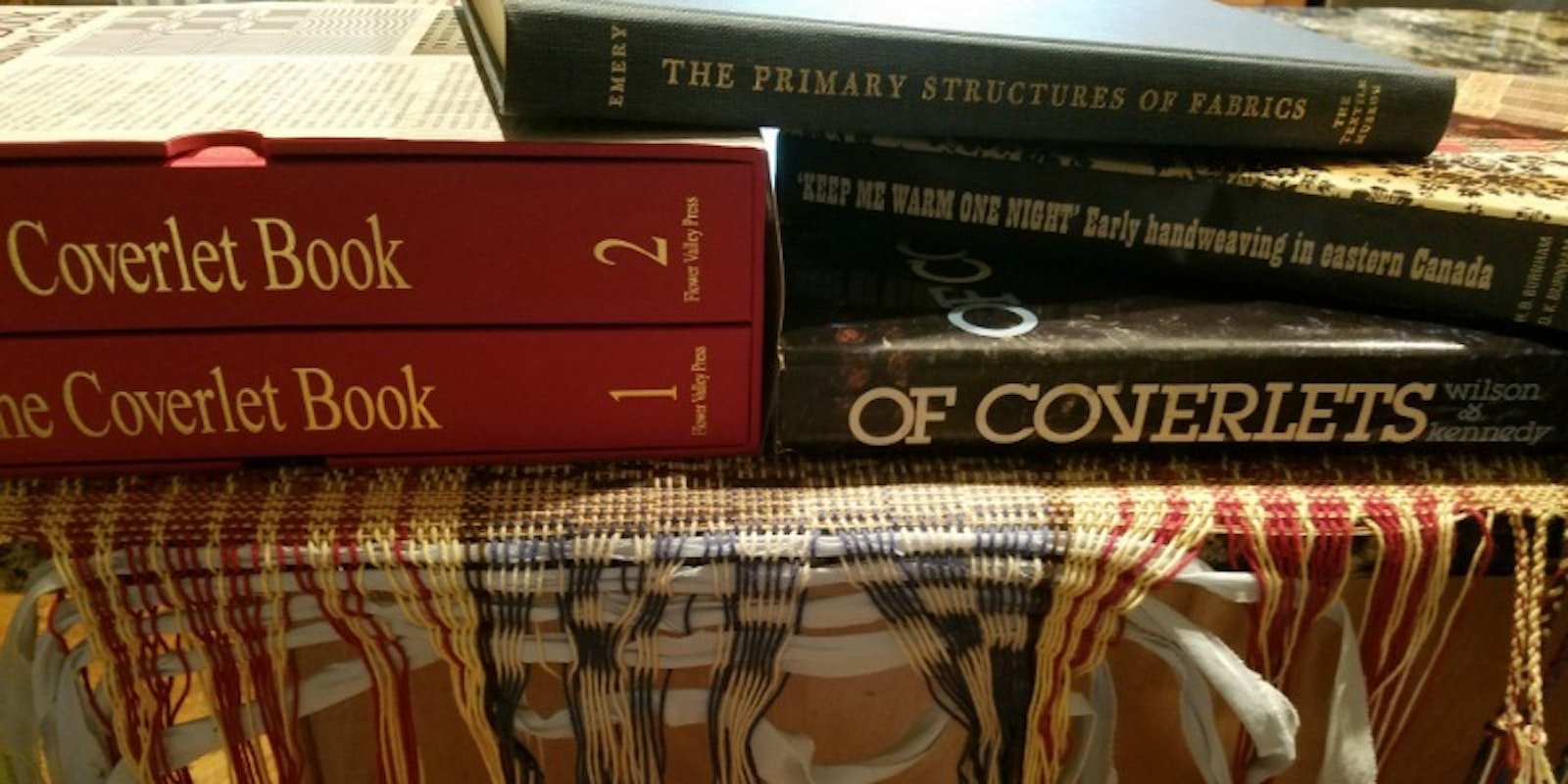Since buying my first weaving book (The Weaver’s Idea Book) my collection has grown by leaps and bounds. For many of us, our libraries are sources of valuable information and inspiration. In his January/February 2018 Handwoven Notes from the Fell, Tom Knisely talks about the love he holds for his library.
—Christina
As you read this, my friends, the cleanup from the aftermath of Hurricane Harvey will have long been under way. While I write this tonight, the rains are still coming down in a deluge in Texas and Louisiana, and people are fleeing their homes with little more than their lives and the clothes on their backs. The news coverage is disturbing, and it makes me appreciate how lucky and blessed I am to have dry conditions here at home. Pennsylvania is my home, and it has had its share of disasters over the years. I have been thinking over the last several days about what I would take with me if I was asked to evacuate my home. My list includes family and pets, extra clothes, important papers, and photos—and I can’t forget my books.
My books are so important to me.
They are where I go for inspiration or to do special research on an obscure subject matter. Many of the titles in my library could be replaced, but what about the few that were self-published with woven samples and only printed in a run of one thousand copies? I realize they are just “stuff,” but it would make me sad to lose them. Looms, tools, and yarns can be replaced with new, but how do you replace some of these books?
There is almost a reverence to my collection. When I decided to move my personal studio back into my house last year, I went out and bought two freestand¬ing shelving units for the books. This would be more climate controlled than the old digs that I sometimes heated to be comfortable when weaving in winter and cooled in the summer. It’s much more responsible, don’t you think? And much more convenient when I get the calling to go and look up something late at night. I don’t have to put on my coat in winter to go out to my old studio space.
Tom snuggles up under a cozy book on coverlets.
I assembled the shelves and took into consideration the height of some of the books. The oversized books would have to go toward the bottom because they are so heavy. I then decided to reserve a full shelf for different areas of interest: one shelf just for rug books, one for pattern books, one for structure themes such as overshot, summer and winter, and crackle. There was the shelf for historical textile studies and one for ethnographical textiles. Oh my gosh—then there were the spinning and dyeing titles to find homes for. I was beginning to think that I would soon be buying another shelving unit!
“What about the magazines? Where are they going to go?” I thought. “I can’t leave them out.” These are some of the most valuable reference sources I know. I have a whole collection of Weavers magazine and its predecessor, Prairie Wool Companion. There are Weaver’s Journal, Weaver’s Craft, Shuttle, Spindle and Dyepot, and numerous issues of other old magazines. The group I would feel the saddest about losing would be my collection of Handwovens. These magazines go back to 1979. I love to grab a pile of old issues of Handwovens on a snowy Sunday afternoon and leaf through the pages and laugh, sometimes at the projects and sometimes at the models.
I hope the bog jacket goes back to the bog and we never return to big fluffy hair on the models. Ah, the days of Aqua Net hair spray. All joking aside, I get a lot of ideas from these pages and love to rework the past with the new and exciting yarns and threads that are available today. If I had to evacuate, I would grab the Handwoven collection for sure.
—Tom


